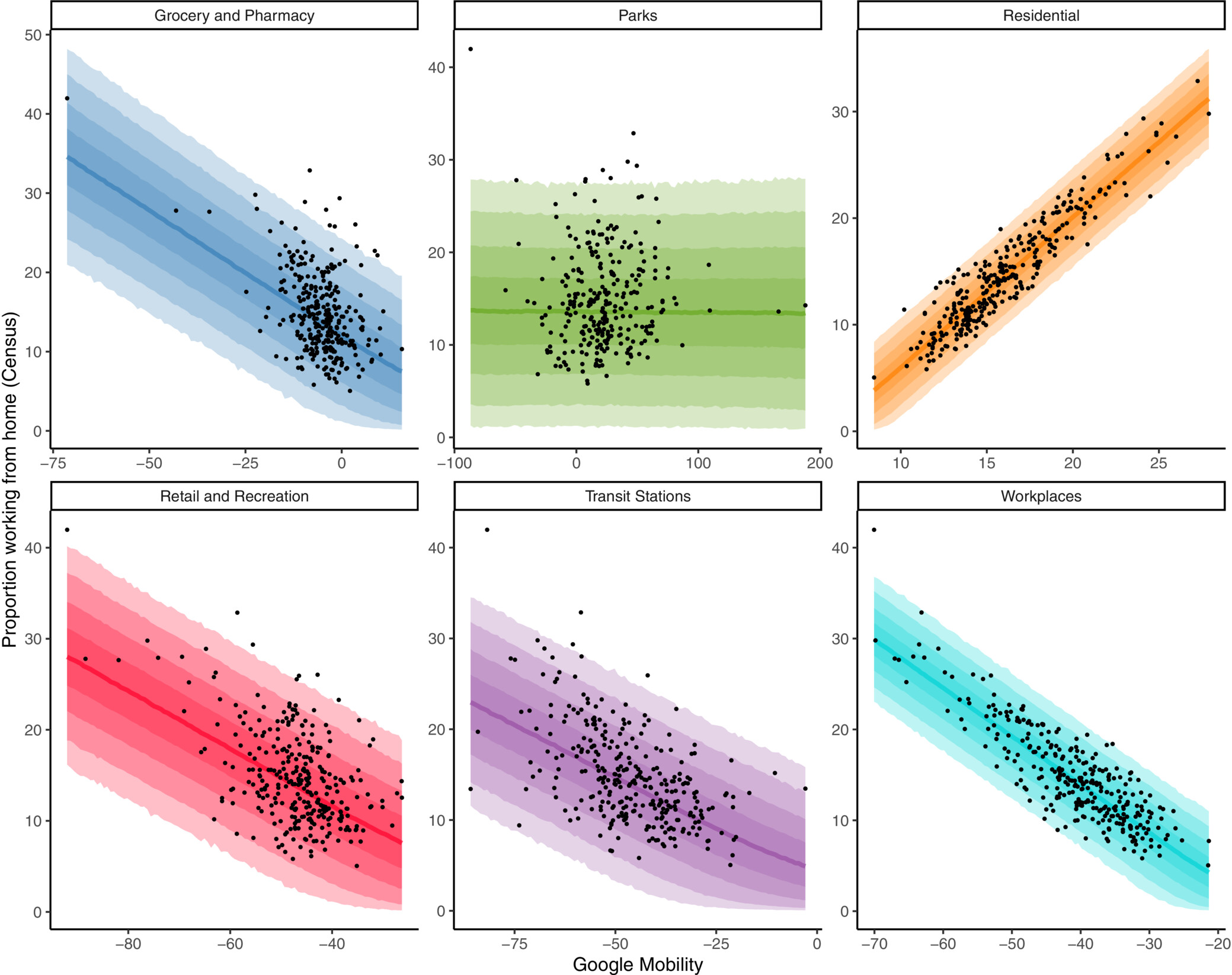Authors: Hamish Gibbs, Patrick Ballantyne, James Cheshire, Alex Singleton, Mark A. Green
Published: October, 2023 in the Geographic Journal

Abstract
This paper provides an analysis of working from home patterns in England using data from the 2021 Census to understand (1) how patterns of working from home (WFH) in England have shifted since the COVID-19 pandemic and (2) whether human mobility indicators, specifically Google Community Mobility Reports, provide a reliable proxy for WFH patterns recorded by the 2021 Census, providing a formal evaluation of the reliability of such datasets, whose applications have grown exponentially over the COVID-19 pandemic. We find that WFH patterns recorded by the 2021 Census were unique compared with previous UK censuses, reflecting an unprecedented increase likely caused by persistent changes to employment during the COVID-19 pandemic, with a clear social gradient emerging across the country. We also find that Google mobility in ‘Residential’ and ‘Workplace’ settings provides a reliable measurement of the distribution of WFH populations across Local Authorities, with varying uncertainties for mobility indicators collected in different settings. These findings provide insights into the utility of such datasets to support population research in intercensal periods, where shifts may be occurring, but can be difficult to quantify empirically.
Cite
@article{gibbs_harnessing_2023,
title = {Harnessing mobility data to capture changing work from home behaviours between censuses},
volume = {n/a},
rights = {The information, practices and views in this article are those of the author(s) and do not necessarily reflect the opinion of the Royal Geographical Society (with {IBG}). © 2023 The Authors. The Geographical Journal published by John Wiley \& Sons Ltd on behalf of Royal Geographical Society (with the Institute of British Geographers).},
issn = {1475-4959},
url = {https://onlinelibrary.wiley.com/doi/abs/10.1111/geoj.12555},
doi = {10.1111/geoj.12555},
abstract = {This paper provides an analysis of working from home patterns in England using data from the 2021 Census to understand (1) how patterns of working from home ({WFH}) in England have shifted since the {COVID}-19 pandemic and (2) whether human mobility indicators, specifically Google Community Mobility Reports, provide a reliable proxy for {WFH} patterns recorded by the 2021 Census, providing a formal evaluation of the reliability of such datasets, whose applications have grown exponentially over the {COVID}-19 pandemic. We find that {WFH} patterns recorded by the 2021 Census were unique compared with previous {UK} censuses, reflecting an unprecedented increase likely caused by persistent changes to employment during the {COVID}-19 pandemic, with a clear social gradient emerging across the country. We also find that Google mobility in ‘Residential’ and ‘Workplace’ settings provides a reliable measurement of the distribution of {WFH} populations across Local Authorities, with varying uncertainties for mobility indicators collected in different settings. These findings provide insights into the utility of such datasets to support population research in intercensal periods, where shifts may be occurring, but can be difficult to quantify empirically.},
issue = {n/a},
journaltitle = {The Geographical Journal},
author = {Gibbs, Hamish and Ballantyne, Patrick and Cheshire, James and Singleton, Alex and Green, Mark A.},
urldate = {2023-11-01},
date = {2023-10-31},
langid = {english},
note = {\_eprint: https://onlinelibrary.wiley.com/doi/pdf/10.1111/geoj.12555},
keywords = {census, {COVID}-19, England, Google, mobility, working from home},
file = {Full Text PDF:/Users/hamishgibbs/Zotero/storage/BYU9GK98/Gibbs et al. - Harnessing mobility data to capture changing work .pdf:application/pdf;Snapshot:/Users/hamishgibbs/Zotero/storage/KJ5MDAC7/geoj.html:text/html},
}